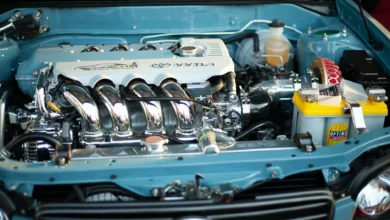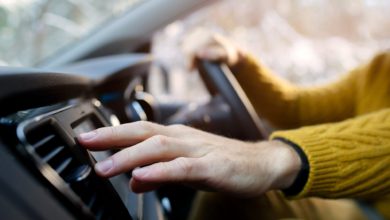7 tips to drive safely in the rain
Thunderstorms and flash floods are common in Malaysia. These downpours slow traffic to a crawl as people slow down in traffic and become cautious as visibility decreases. In this article, we offer some crucial advice to help you drive safely in the rain.
Updated on 26 September 2023

3 things to check before you drive
Functional headlights

Headlights are a crucial piece of equipment that can improve your visibility on the road and make you visible to others. On a rainy day, simply turn on your headlights and visibility will improve. When the rain is so heavy you can’t see a thing, turning on halogen fog lights will increase visibility more as white light will just be reflected back to your eyes. So do check that they are functioning correctly and are not too dim! If there are, it could mean something is up with your battery!
Read more: How to use your car lights correctly
Working windshield wipers
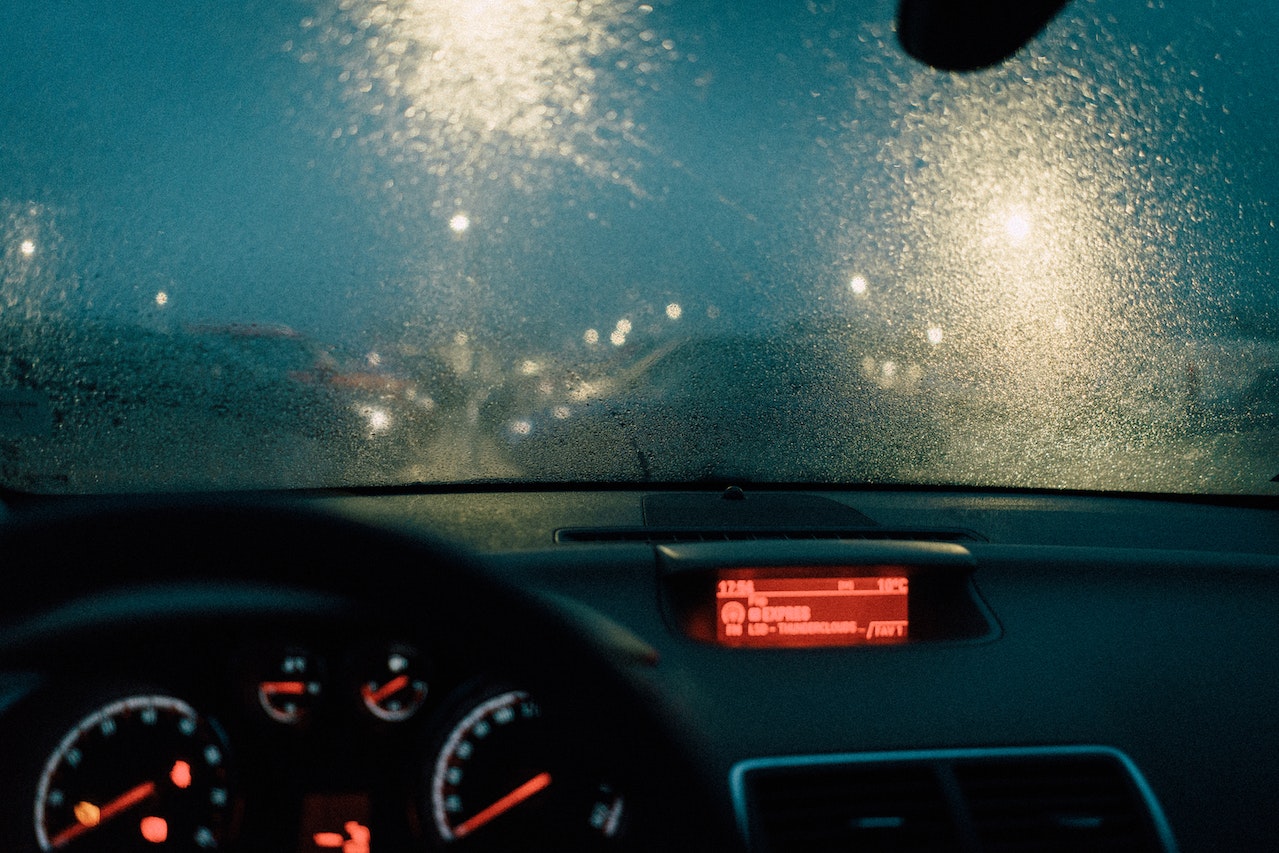
Before you start driving, check that your windscreen wipers are in optimal condition. This is crucial for your safety. The heavy rain will cause your windshield to be obscured and you will need your wipers to clear them. Under Malaysia’s harsh heat, wipers are prone to hardening and cracking. These hard wipers do not remove water off windshields as effectively, so visibility will remain suboptimal when they are turned on. So be sure to check your wipers every 6 months to ensure they are not worn out and replace them when they are.
Make sure your wheels aren’t smooth

Your wheels are unsurprisingly important as they keep your car on the road. If your tyres’ grooves are nearly gone, get them replaced immediately! Be sure to properly inflate them every month and ensure the grooves are more than 2mm deep.
If your car tyres are bald or botak, your car will have poor traction and you will skid or slide. This sliding tendency is much higher on wet roads and you risk aquaplaning.
Learn how you can take care of your tyres and change a flat tyre!
4 crucial driving techniques
Keep both hands on the wheel
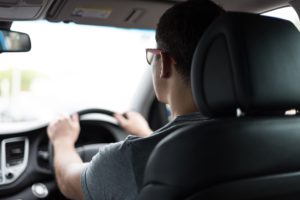
We know it is cool to drive with just one hand. But when it rains, it is better to keep both hands on the steering wheel to react quickly when things go awry. A steady grip can mean the difference between losing control and a regular, uneventful drive.
The 3-second rule
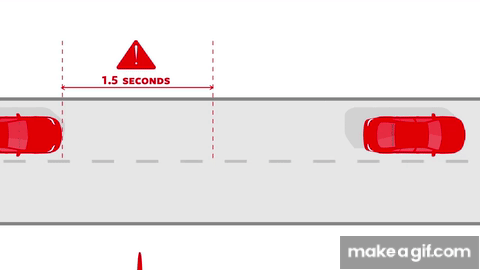
No, this is not how long dropped food is still safe to eat. This is about how to maintain a safe distance when you drive. But the word distance is misleading as the safe distance changes depending on the speed you are driving at. That is why there is a 3-second rule.
By maintaining 3 seconds between yourself and the car in front of you, you have 1.5 seconds to realise and judge if a car before you has slowed down, brake to a complete stop, or do something else entirely. You will also have 1.5 seconds for your car to brake to a complete stop if necessary.
When it rains, however, you should increase the distance from 3 seconds to 4. Similarly, if you drive a bigger car, you will need to increase the distance based on the size of your car, as you will need more time to come to a complete stop.
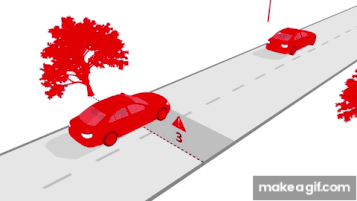
Overcoming aquaplaning
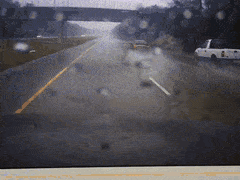
Aquaplaning occurs when water on the road lifts the tyres up, causing you to lose traction and therefore control. To recover from aquaplaning, ease gently off your accelerator and gently apply the brakes. You should also keep a firm grip on the steering wheel and be sure not to make any sudden steering actions. The tyres will eventually regain traction as the water clears.
If an accident is imminent, pull the emergency brake. Your rear tyres may still have enough traction to slow the vehicle. Once you regain control of the car, continue driving as normal but at a reduced speed.
When you see a flood, avoid it at all costs
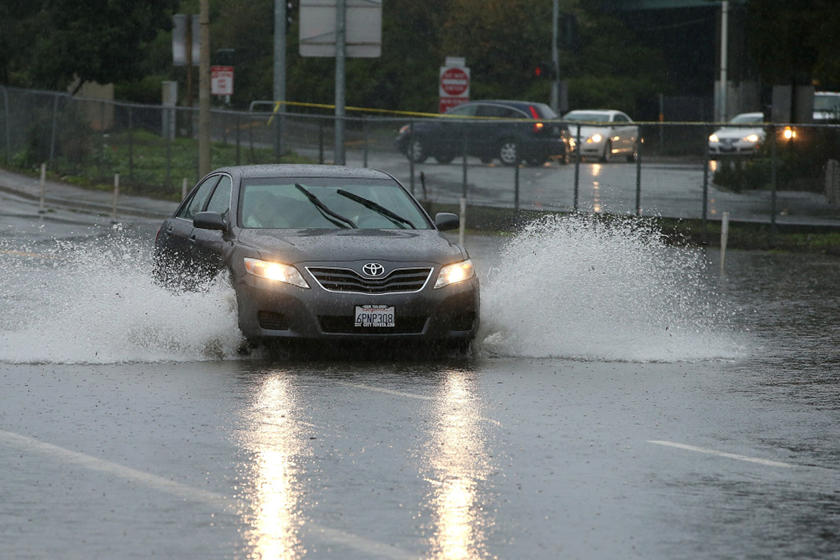
If you’re faced with a flooded road, find an alternative route and avoid it at all costs, especially if the standing water is 15 cm deep or more. If there are no alternatives, park the car on the shoulder of the road and wait for it to subside. Pay attention to the water level and retreat to higher ground if the water continues to rise. You do not want to become trapped!
However, if the standing water is shallow, attempting to drive through it is possible. The best approach is to press lightly on your clutch and add gentle pressure on your accelerator to increase your engine revs. For auto transmissions, apply pressure on the accelerator without increasing your speed and accelerate slightly but control the speed with your brakes. Make sure that you drive as slowly as possible going through the flood. Too quick and you might damage your bumper!
After passing through, make sure to test the brakes and ensure they’re as dry as possible. Remember if water gets in the exhaust, engine bay or the interior of the car, it could cause a lot of damage, to the car and to your wallet. If the engine should take in water, you risk an immediate engine lock and sudden stop. If the water is fast-flowing, do not attempt to drive through it, as there is a real danger of your car being swept off the road.
If you are looking for a pre-owned car, myTukar is the best choice! We guarantee that 0 flood damage and all meet our rigorous myTukar Certified standards. Check out our diverse list of cars for the right one for you!


